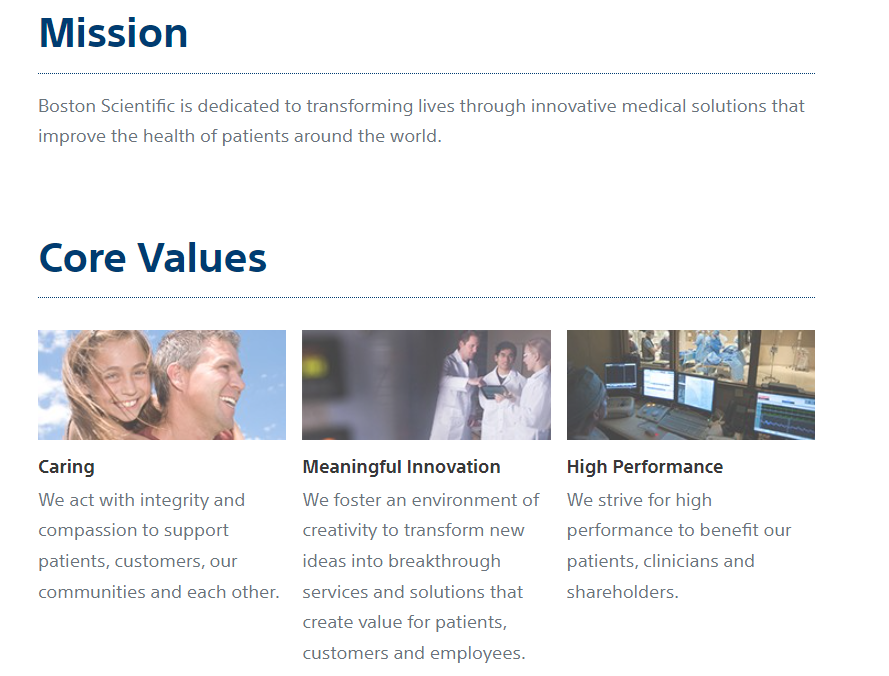Table of Contents
ToggleA Brief History of Boston Scientific
Boston Scientific Corporation is a leading global medical device company that was founded in 1979 in Boston, Massachusetts. The company began as a manufacturer of medical devices for interventional cardiology and has since expanded its product line to include a wide range of medical devices for cardiology, electrophysiology, endoscopy, urology, and neuromodulation.
In the 1980s and 1990s, Boston Scientific made several strategic acquisitions that allowed the company to expand its product offerings and grow its market presence. This included the acquisition of several other medical device companies, allowing Boston Scientific to diversify its product portfolio and enter new healthcare markets.
In the early 2000s, Boston Scientific gained significant attention with the introduction of its drug-eluting stent, which revolutionized the treatment of coronary artery disease. The company expanded its research and development efforts, bringing new and innovative medical technologies to market.
Throughout its history, Boston Scientific has continued to grow through acquisitions, partnerships, and product development. The company has a strong focus on innovation and has received numerous awards for its medical devices and technologies.
Today, Boston Scientific has a global presence, with operations in over 100 countries and more than 32,000 employees worldwide. The company continues to be a leader in the medical device industry, developing advanced technologies to improve patient care and outcomes.
Who Owns Boston Scientific?
Boston Scientific Corporation is owned by a diverse group of shareholders, including institutional investors and individual stakeholders. The company’s top 10 shareholders as of the most recent filings are Vanguard Group Inc., BlackRock Inc., Capital Research Global Investors, State Street Corporation, Fidelity Management & Research Company, JPMorgan Chase & Co., Wellington Management Company LLP, Norges Bank Investment Management, Bank of America Corporation, and Geode Capital Management LLC. These shareholders collectively hold a significant portion of the company’s stock, and their ownership reflects the broad interest and support for Boston Scientific Corporation in the investment community.
Boston Scientific Mission Statement

Boston Scientific Corporation’s mission is to transform lives through innovative medical solutions that improve the health of patients around the world. They are committed to advancing the field of medical technology by developing and delivering breakthrough products and therapies that help healthcare professionals provide better and more effective care for their patients. With a focus on innovation, collaboration, and patient-centric values, Boston Scientific aims to positively impact the lives of individuals and communities by contributing to the advancement of healthcare.
How Boston Scientific Makes Money?
Boston Scientific Corporation is a medical technology company that makes money through the sale of medical devices and equipment, including products for cardiology, urology, endoscopy, and neuromodulation. The company generates revenue through the sale of these products to hospitals, healthcare providers, and other medical facilities. In addition to product sales, Boston Scientific also earns money through service and support contracts, as well as through its collaboration with healthcare professionals and researchers to develop new medical technologies. Overall, the company’s revenue stream is driven by the sale of its innovative medical devices and equipment to healthcare organizations around the world.
Boston Scientific Business Model Canvas
The Business Model Canvas is a strategic management tool that provides a visual representation of a company’s business model. It consists of nine key building blocks that outline the value proposition, customer segments, channels, customer relationships, revenue streams, key resources, key activities, key partners, and cost structure.
Customer Segments:
Boston Scientific Corporation targets a wide range of customer segments including healthcare providers, hospitals, physicians, and patients. The company focuses on delivering innovative medical technologies and services that cater to the needs of these diverse customer segments.
Value Propositions:
Boston Scientific Corporation offers a wide range of value propositions including high-quality medical devices, innovative solutions, and personalized care. The company’s products and services are designed to improve patient outcomes and enhance the quality of healthcare delivery.
Channels:
Boston Scientific Corporation utilizes multi-channel distribution strategies to reach its customer segments. These channels include direct sales, online platforms, distributors, and strategic partnerships with healthcare organizations.
Customer Relationships:
Boston Scientific Corporation fosters strong customer relationships through personalized support, ongoing communication, and post-sales services. The company aims to build long-term partnerships with its customers, based on trust and value.
Revenue Streams:
Boston Scientific Corporation generates revenue through the sale of medical devices, products, and services. Additionally, the company earns revenue from licensing agreements, royalties, and strategic collaborations.
Key Resources:
Key resources for Boston Scientific Corporation include its talented workforce, advanced technologies, intellectual property, manufacturing facilities, and research and development capabilities. The company also relies on strong brand recognition and a global network of partners.
Key Activities:
Boston Scientific Corporation’s key activities involve research and development, product design, manufacturing, sales, marketing, and customer support. The company continuously innovates to improve its product portfolio and expand its market presence.
Key Partners:
Boston Scientific Corporation collaborates with various key partners including suppliers, healthcare providers, research institutions, and regulatory authorities. These partners play a critical role in the company’s supply chain, product development, and market access.
Cost Structure:
The cost structure of Boston Scientific Corporation includes expenses related to research and development, manufacturing, sales and marketing, distribution, and customer support. The company also incurs costs for regulatory compliance, intellectual property protection, and talent acquisition.
In conclusion, the Business Model Canvas for Boston Scientific Corporation highlights the company’s focus on customer value, innovation, and collaboration to drive sustainable growth and success in the medical technology industry.
Boston Scientific’s Competitors
Boston Scientific Corporation faces fierce competition in the medical device industry from a number of notable rivals. The top 5 competitors of Boston Scientific Corporation are Medtronic, Johnson & Johnson, Abbott Laboratories, Becton Dickinson and Company, and Stryker Corporation. These companies are all major players in the medical device market and are constantly innovating and developing new products to compete with Boston Scientific. The competition among these companies drives innovation and ultimately benefits patients by providing a wide range of cutting-edge medical devices and technologies.
Boston Scientific SWOT Analysis
Strengths:
1. Strong brand recognition in the medical device industry
2. Diversified product portfolio in cardiology, endoscopy, and urology
3. Global presence and distribution network
4. Strong focus on innovation and R&D
Weaknesses:
1. Dependence on a few key products for a significant portion of revenue
2. Regulatory challenges in the healthcare industry
3. Vulnerability to changes in healthcare policies and reimbursement rates
Opportunities:
1. Emerging markets in Asia and Latin America
2. Aging population driving demand for medical devices
3. Expansion into new product categories through acquisitions and partnerships
Threats:
1. Intense competition from other medical device companies
2. Price pressure from healthcare providers and payers
3. Potential legal and regulatory issues related to product safety and effectiveness
Concluding Analysis
In looking at the business model of Boston Scientific Corporation, I am impressed by their commitment to innovation, their diverse portfolio of products, and their focus on driving growth and improving patient outcomes. As an analyst, I see a bright future ahead for the company. With continued investment in R&D and strategic acquisitions, Boston Scientific is well-positioned to maintain its position as a leader in the medical device industry. Additionally, their focus on expanding into emerging markets and their efforts to diversify their offerings bode well for continued success. Overall, I am optimistic about the future of Boston Scientific Corporation and look forward to seeing how they continue to drive value for both their customers and shareholders.
Additional Resources
To keep learning and advancing your career, we highly recommend these additional resources:
Business Model Canvas of The Top 1,000 Largest Companies by Market Cap in 2024
A List of 1000 Venture Capital Firms & Investors with LinkedIn Profiles
Peter Thiel and the 16 Unicorns: The Legacy of Thiel Fellowship












